Patients are often dismayed to find that following a weight loss surgery or extensive weight loss, even with significant weight gone, they are still not completely satisfied with their appearance. A common area of concern is the face – when weight is lost, round, full cheeks can become hollow, and skin can sag around the jowls and under the eyes as the underlying fat melts away.

Achieving The Aesthetic Results You Seek
Whether the result of a long weight loss journey or simply the ravages of time, sagging skin and deep creases in the face leave many individuals feeling insecure about their appearance. These factors can also contribute to making a person look perpetually sad, tired, or even angry, when they may not be feeling that way at all. Countless individuals have found new confidence with a rejuvenating facelift, and we at NYBG Plastic Surgery are uniquely qualified to address both cosmetic concerns and those related to weight loss, which so often go hand in hand. Contact us to schedule your initial consultation.
Kevin Small Md Publications (Face Lift)
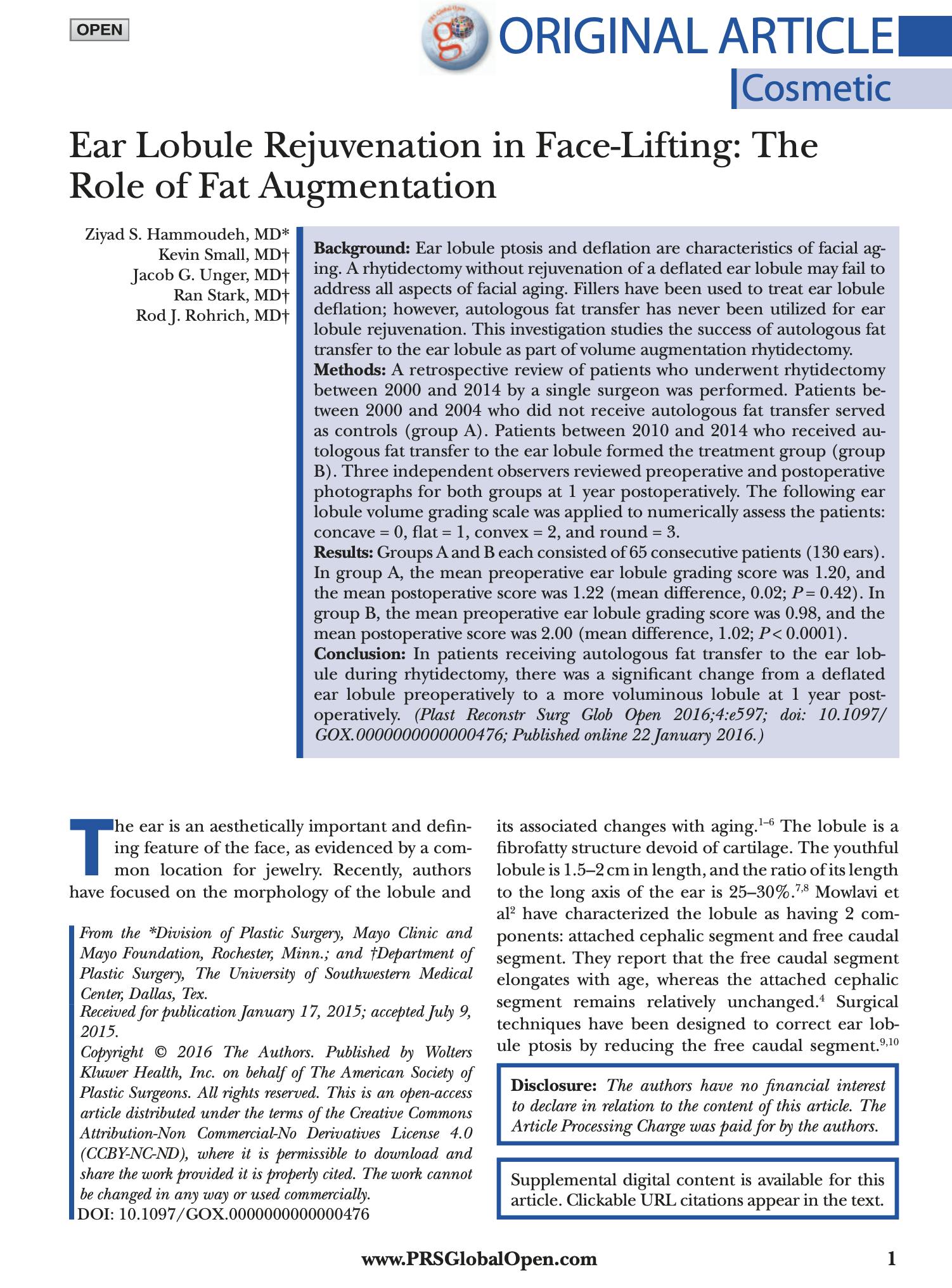
Ear Lobule Rejuvenation in Face-Lifting: The Role of Fat Augmentation
Ear lobule ptosis and deflation are characteristics of facial aging. A rhytidectomy without rejuvenation of a deflated ear lobule may fail to address all aspects of facial aging. Fillers have been used to treat ear lobule deflation; however, autologous fat transfer has never been utilized for ear lobule rejuvenation.
Read More About Facelift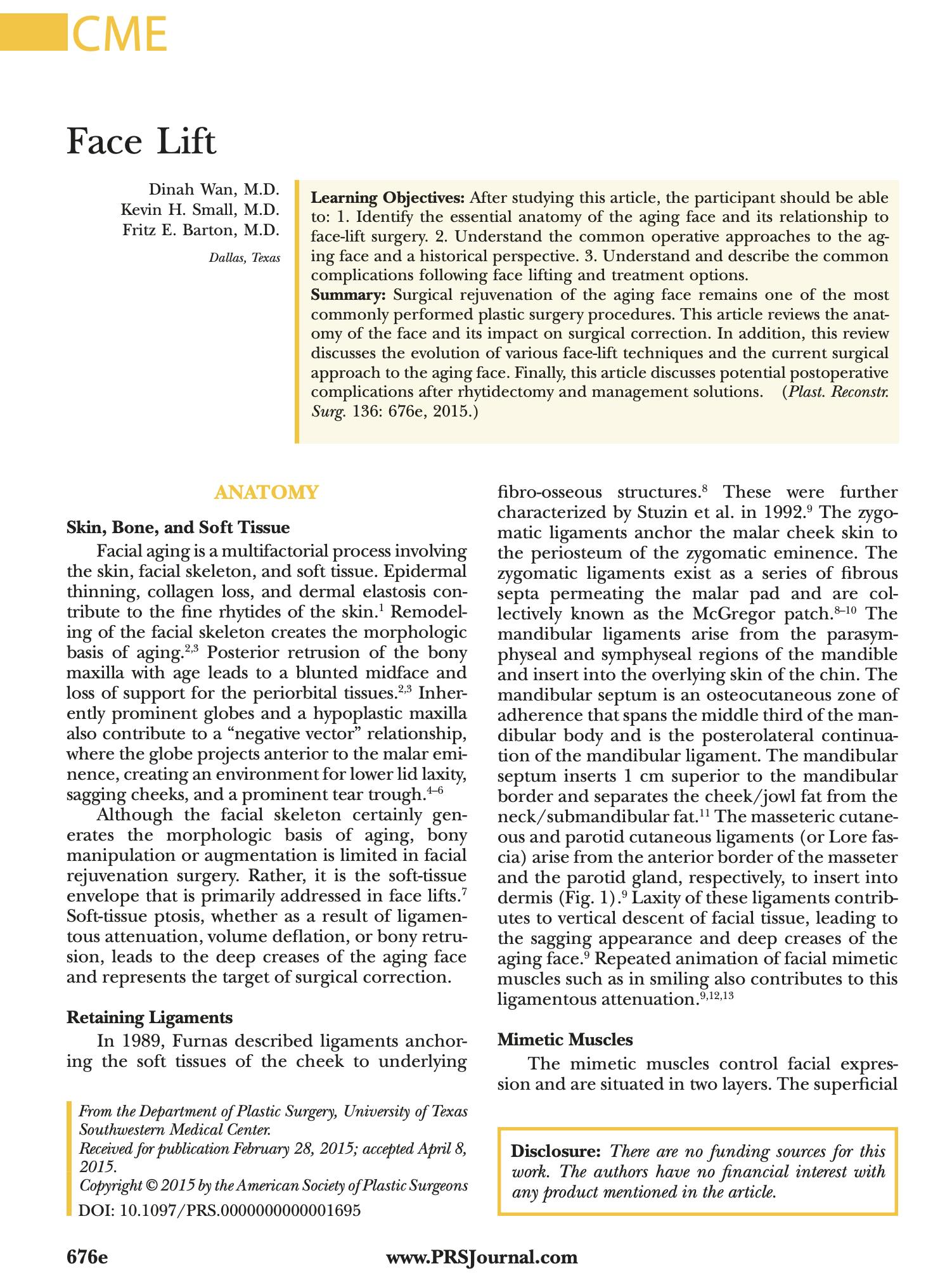
Face Lift
Surgical rejuvenation of the aging face remains one of the most commonly performed plastic surgery procedures. This article reviews the anatomy of the face and its impact on surgical correction.
Read More About Facelift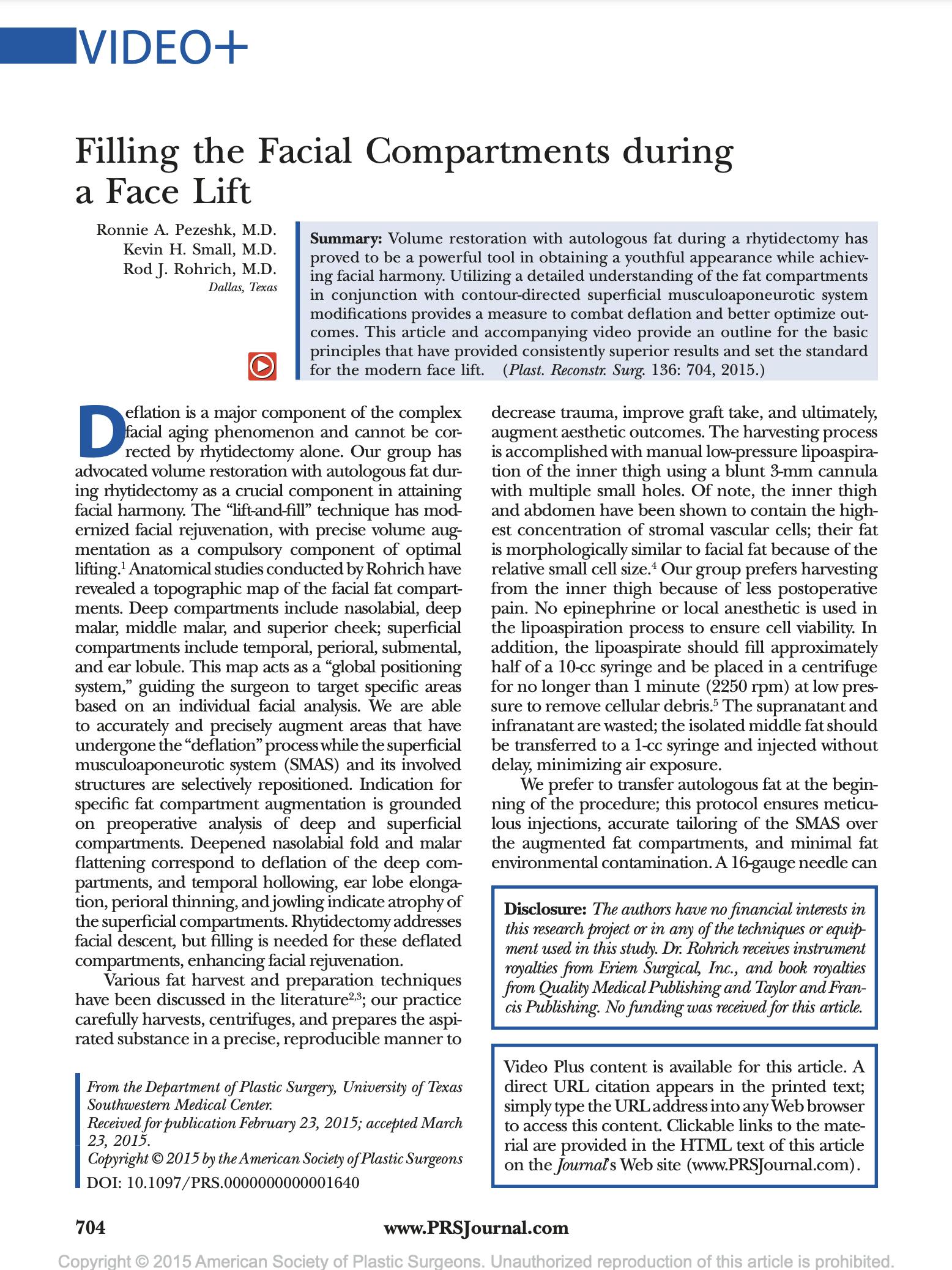
Filling the Facial Compartments during a Face Lift
Volume restoration with autologous fat during a rhytidectomy has proved to be a powerful tool in obtaining a youthful appearance while achieving facial harmony. Utilizing a detailed understanding of the fat compartments in conjunction with contour-directed superficial musculoaponeurotic system modifications provides a measure to combat deflation and better optimize outcomes.
Read More About Facelift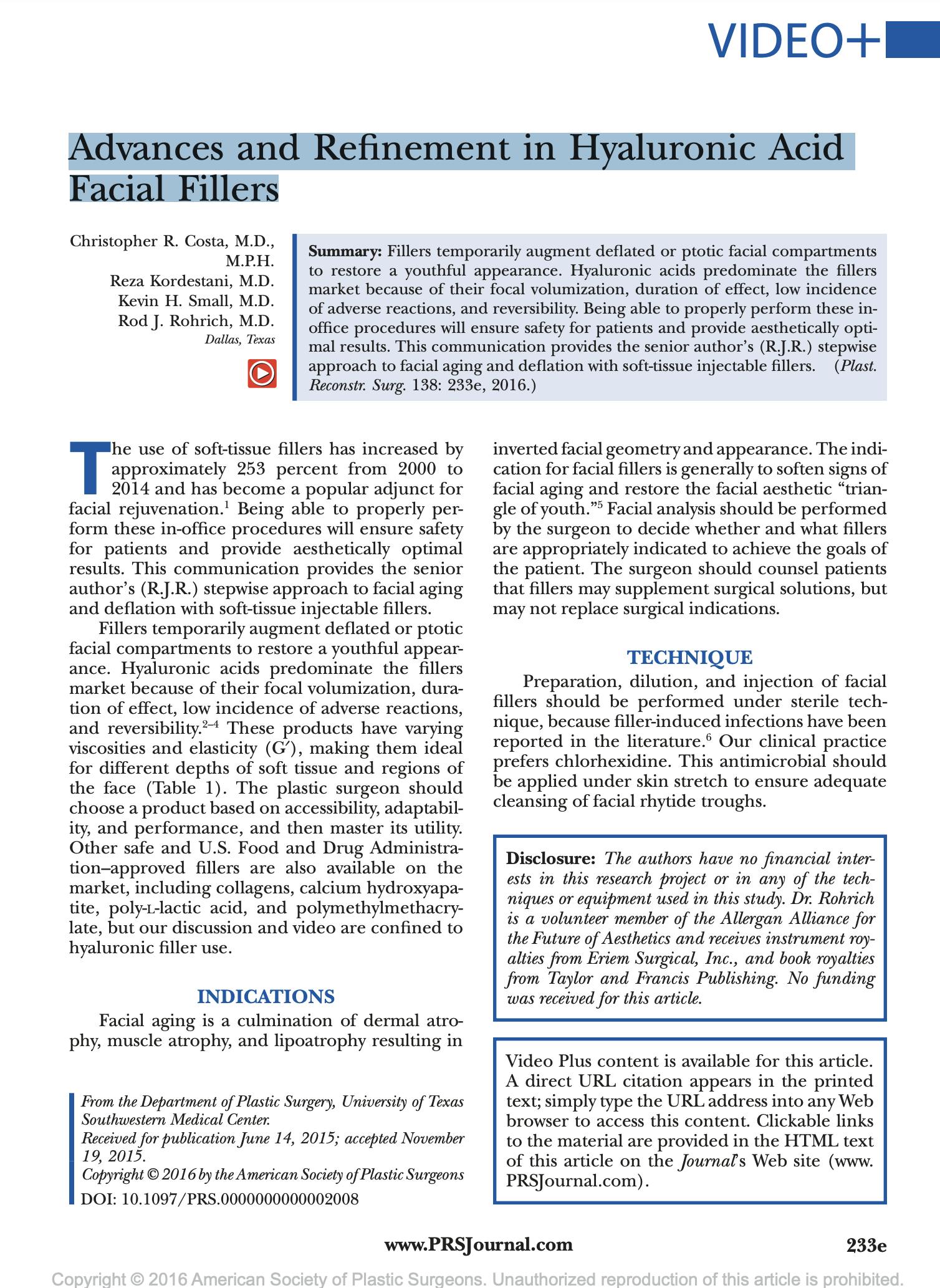
Advances and Refinement in Hyaluronic Acid Facial Fillers
Fillers temporarily augment deflated or ptotic facial compartments to restore a youthful appearance. Hyaluronic acids predominate the fillers market because of their focal volumization, duration of effect, low incidence of adverse reactions, and reversibility.
Read More About Facelift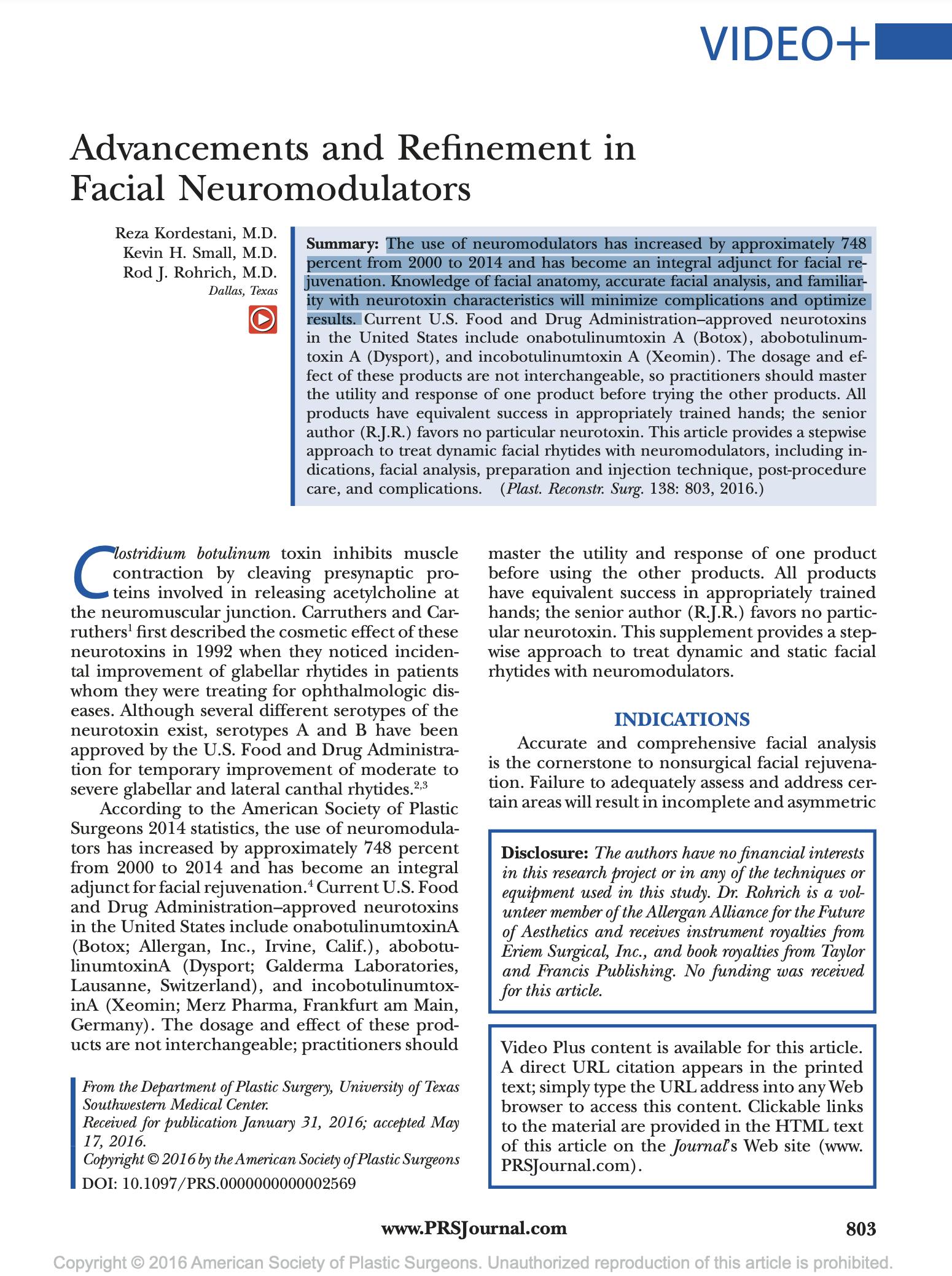
Advancements and Refinement in Facial Neuromodulators
The use of neuromodulators has increased by approximately 748 percent from 2000 to 2014 and has become an integral adjunct for facial rejuvenation. Knowledge of facial anatomy, accurate facial analysis, and familiarity with neurotoxin characteristics will minimize complications and optimize results.
Read More About Facelift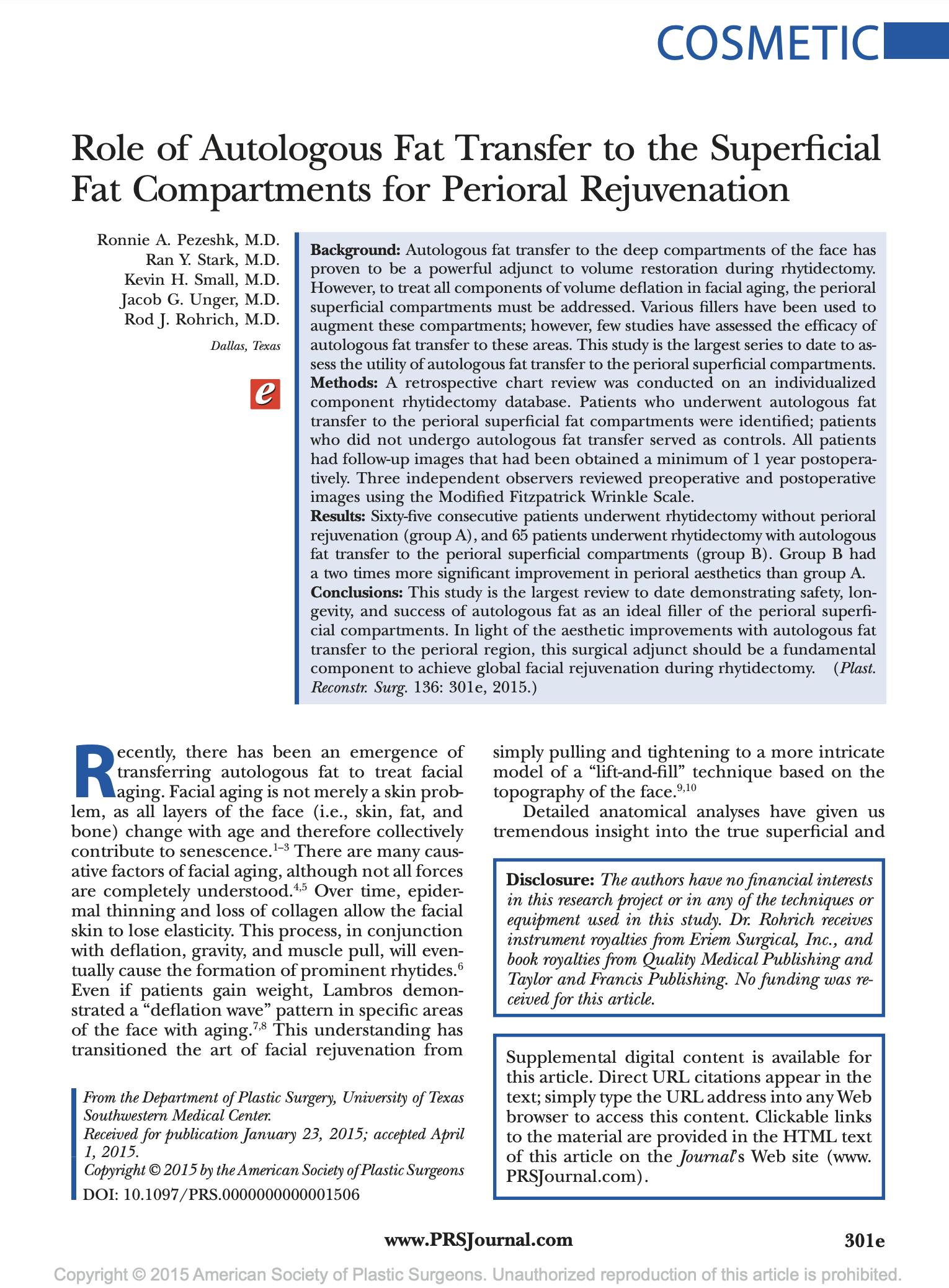
Role of Autologous Fat Transfer to the Superficial Fat Compartments for Perioral Rejuvenation
Autologous fat transfer to the deep compartments of the face has proven to be a powerful adjunct to volume restoration during rhytidectomy. However, to treat all components of volume deflation in facial aging, the perioral superficial compartments must be addressed.
Read More About Facelift



